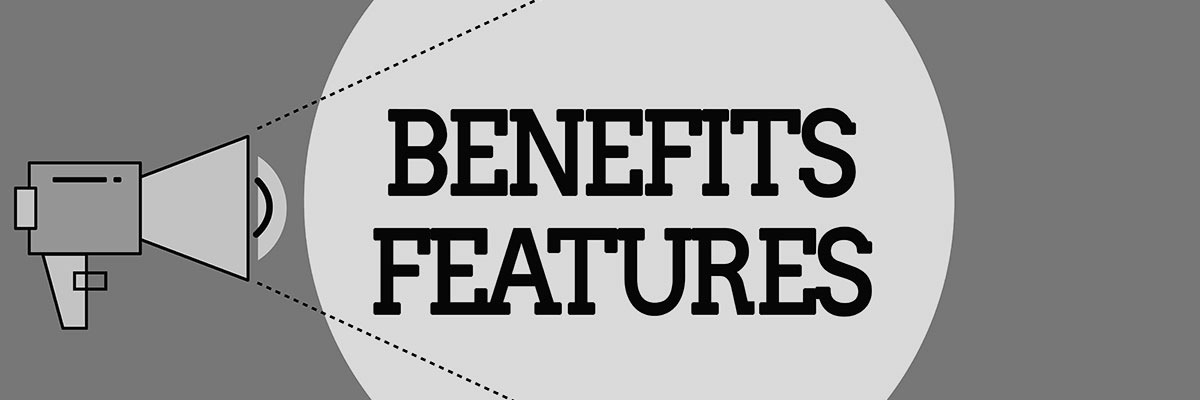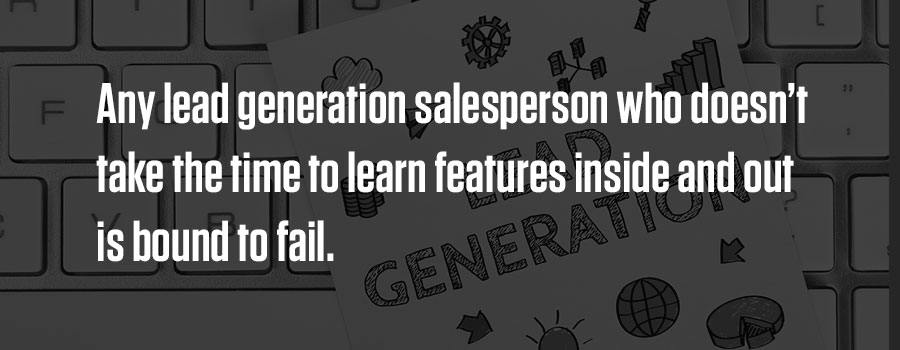
Sales Tip — Talk Features When Challenged On A Benefit
You’ll hear it said that salespeople should talk benefits, not features.
This is bad advice.
In certain situations, talking about features closes a sale. Any lead generation salesperson who doesn’t take the time to learn features inside and out is bound to fail.
If you’re looking for a formula, here is one that beats “talk benefits, not features”: Talk features when challenged on a benefit.
Start With Benefits
Some prospects are happy to accept product/service benefit statements at face value. If you say, “Our widget will improve your production throughput by 25 percent,” there are people who will believe you. Why? Maybe because the reputation of your company precedes you. Maybe they don’t really care about doing thorough research. Maybe they already know about the features. Maybe they have to spend $10,000 on something before the end of the year, and your something is the best option going.
But far more often, prospects are skeptical. They want you to prove it. How exactly does your widget improve throughput by 25 percent, they may want to know. At this point you need to explain the (perhaps literal) nuts and bolts of your offering. You need to explain the value of the unique engineering, the greater durability of components, why the offering needs less maintenance, etc.
If you can’t convey this with authority, if you don’t know what you’re talking about, the prospect will conclude that your offering is no good, a risky investment. To convey features with authority, you must:
- Explain features in plain English
- Explain features with specifics
- Explain how the features are superior to the competition
- Explain their impact specifically in the prospect’s application — i.e., in the selling context

Features Rock
There’s a widespread belief that today’s buyers care about engagement and brand image and a vendor’s social commitment. I’d be careful not to buy in too heavily to this idea. Your social media activity doesn’t improve a prospect’s bottom line. Your brand image doesn’t reduce a prospect’s operating costs. Your company’s charitable activity, laudable as it may be, doesn’t help the prospect prevent onsite accidents and injuries. The faster and more directly you can establish your business value through benefits and prove it through features, the more leads you’ll put in the pipeline.
Don’t Start With Features
Some salespeople start by talking features, perhaps thinking they will dazzle prospects with their knowledge. But starting with features is as bad as not being able to talk about them, because without first articulating the benefit, prospects won’t know how all of your technical detail relates to their business issues. If you’re in the middle of a presentation and the prospect leaves the room or falls asleep, there’s a good chance you are talking about features too much and too early.
Online Reviews: Handle With Care
You might think you can skip all the features by pointing prospects to online reviews of your product/service to seal the deal. If you do this, you’re playing with fire. It’s true some prospects are greatly influenced by third-party reviews, but online reviews can backfire badly, because:
- The prevalence of fake reviews has made people skeptical of positive reviews. Even if this plague of fake reviews has not infected your industry, the perception is still going to be there.
- If prospects comb the web for reviews of your product/service, sooner or later they’ll come across a negative review. This one negative review could undo the benefits of the 10 positive reviews they read earlier: game, set, match to the competition.
Get Facts for Your Features
Big companies have in-house testing capabilities, and companies of any size can use independent testing labs to establish the quality of (or certify) various product components. Doing this puts more power in your presentation of features.
For instance, it’s one thing to say a particular mechanism is twice as strong as the competition’s, resulting in less downtime. It’s another thing to say an independent lab has run your mechanism for 500,000 cycles without failure and the competitor’s failed after 250,000 (or never has been tested at all).
If you go into a sales call ready to talk features, you’re much more likely to make a sale. If you add to that testing results or other meaningful data (order fill rates, customer retention rates, etc.), then your presentation will be as close to irresistible as it can be.




